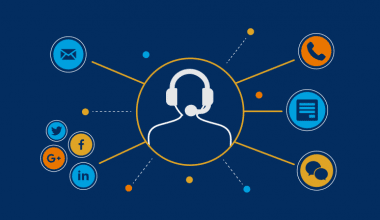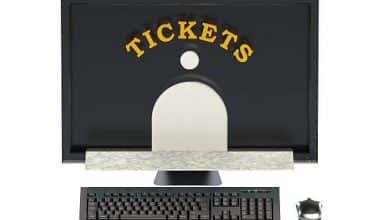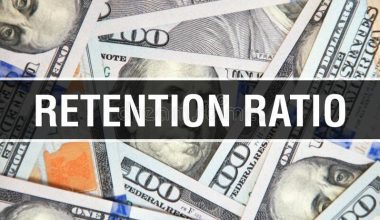Generally speaking, no prospective buyers are the same. What your brand offers have broad appeal, which is great for business but poses a formidable advertising problem. Instead of trying to appeal to everyone, organizations in the growth stage of their life cycle would do well to narrow their attention to the subset of customers who are most like their best current customers. The path forward is customer segmentation. Marketers can better interact with each customer if they have a clear understanding of how to divide up their base. To better understand your customers, customer segmentation utilizes several approaches, methods, and analyses to classify them into smaller groupings based on commonalities. By grouping customers into distinct personas based on their shared characteristics, businesses may better target their messages to prospective buyers at each stage of the buying process. Let’s navigate you through customer segmentation examples and models.
What Is Customer Segmentation?
Customer segmentation is the process of dividing your client base into subgroups with similar characteristics (such as demographics or behaviors) in order to target your marketing and sales efforts more precisely.
The process of developing a marketing persona or a product user persona can also begin with the identification of distinct categories of customers. This is due to the fact that an effective customer segmentation analysis is typically used to inform a brand’s messaging and positioning, provides insight into which new products and services an organization may wish to invest in, and reveals opportunities to enhance the company’s sales processes. As a result, marketing personas need to be tailored according to the needs of those groups.
Furthermore, since the definition of the “target persona” (or “marketing persona”) is a fictional representation of a particular type of consumer, it is usual practice for organizations to develop multiple personas, each tailored to a different customer subset. Yet in order to do that, a company has to have a thorough customer segmentation model in place.
Customer Segmentation Models
If you want to divide your target population into subsets with similar needs and interests, you can use customer segmentation models and methods. Using factors like age, gender, region, occupation, and income, demographic segmentation creates subsets of an audience. You want your messages to hit home with each subset of your target audience as much as possible, so you tailor them to them.
Generally speaking, there are three distinct ways to divide a market using customer segmentation models and methods:
#1. Needs-Based Segmentation
In needs-based segmentation, groups of customers are categorized based on their material, psychological, and social requirements. Find out where your target audience is experiencing discomfort as a result of those needs. Through focused needs-based segmentation, you may learn what your ideal consumer is looking for, whether it be an inexpensive present, a method to improve workplace collaboration or a supportive cushion for their office chair to alleviate back discomfort.
#2. A Priori Segmentation
The easiest method utilizes a classification strategy depending on easily accessible variables, such as industry and firm size, to divide the market into separate subsets of consumers. Companies in the same industry and of the same size may have vastly varied requirements, making it difficult to generalize about their needs using a priori market segmentation.
#3. Value-Based Segmentation
When deciding how to allocate your marketing resources, value-based segmentation involves calculating the monetary worth of each potential customer subset. For instance, you can prioritize the most lucrative leads if you discover one set is generally more useful than another. Despite it may appear impersonal, value-based segmentation is essential for firms seeking to maximize marketing return on investment. Customer lifetime value information can reveal which segments of your target market are the most economically viable to pursue, keep, and convert into repeat buyers.
What Are the Key Types of Customer Segmentation?
Brands can increase their conversion rates by employing any one of four different customer segmentation models and methods.
#1. Demographic Segmentation
Using readily available demographic variables is the most common approach to targeting specific subsets of your audience. To name only a few examples: age, marital status, education, income, religion, race, and ethnicity. This information is simple to obtain, yet it is insufficient on its own. In order to improve your site, you must first collect information about its visitors.
#2. Geographic Segmentation
Businesses that sell in more than one country or time zone, or that sell seasonal goods, can benefit from this type of segmentation. By taking into account factors like latitude and altitude, you may divide your target audience into more manageable chunks. A city like San Diego, where the average annual temperature is 70 degrees, is hardly the ideal market for a fashion label that specializes in fur jackets.
Zip code and city/country status can be used to further divide people into distinct groups. A company may also choose to modify its communications in light of regional variations in language usage, cultural mores, or religious tenets.
#3. Psychographic Segmentation
A user’s mental and emotional state is the focus of the next level of segmentation. It consists of things like one’s character, hobbies, beliefs, values, attitudes, and way of life.
An online store selling eco-friendly products, such as recycled iPhone cases, would do well to divide its customer base into distinct demographics. They will use these standards to inform their audience segmentation decisions and the material they choose to showcase.
#4. Technographic Segmentation
Lastly, there’s technographic segmentation, which uses users’ attitudes toward technology as targeting criteria. It all comes down to a user’s familiarity with and comfort with technology.
This is especially true for companies whose recently released goods rely heavily on app-enabled features or technical know-how to accomplish their intended purposes.
This may include, for instance, a floor lamp that is controlled by voice through Alexa and can be turned on and off from afar. Your consumers’ lack of technical expertise may prevent the success of this feature that relies on them understanding and using complex technology. Obtaining this type of client information can greatly enhance long-term customer retention and product development.
Customer Segmentation Examples
In order to boost your online store’s earnings, we’ll show you how to use customer segmentation in your advertising campaigns by providing real-world examples.
#1. Gender
When it comes to shopping, men, and women have extremely distinct habits and preferences. Keeping these distinctions in mind can help you tailor your products and services to the needs of specific genders. The open and click-through rates for emails sent to both sexes benefit by tailoring messages to each gender.
#2. Location
Your marketing plan will feel more regionally tailored if you take location into account. First, it reveals specifics about your target audience’s physical and digital environments. If a part of your market is dispersed across the country, you can use this information to tailor your outreach strategy to their specific location. As an example, if you’re trying to reach consumers in Boston, your strategy will be different than if you’re trying to reach consumers in Walla Walla, Washington.
#3. Device Type
Fantastic potential for segmentation arises from the fact that mobile users now make up more than half of a brand’s total traffic. For instance, if you run a business selling phone accessories, you could divide your customers into subsets based on the types of phones they use and market to them accordingly.
Even if your product is utilized the same way regardless of the device, you should still analyze your data to determine if there are any differences in purchasing habits between devices. Is there any evidence that particular kinds of mobile copy or deals are more successful than others? Try it out and see if you can boost your sales by doing so.
#4. Prior Interaction With A Customer
The final interaction a customer has with your company can teach you a lot about how to improve future interactions with them. Depending on where they are in the buying process, a customer who had a good experience may be primed for a particular offer. The engagement may have been bad, in which case you may wish to contact customer service or the success team to try and repair the connection.
#5. Lifestyle
In order to zero in on your ideal customer, lifestyle segmentation analyzes their actions and demographics.
You can, for instance, focus on potential clients who share your interest in the high life and who have shown consistent buying patterns with pricey products over the past thirty, sixty, or ninety days. These metrics and segments can be defined and targeted depending on the platform you’re utilizing. Marketing efforts will provide better results in terms of product relevance and intent if they are launched with the consumer’s lifestyle in mind.
#6. Top Buyers
Sort your subscribers into several categories based on how loyal they are to your brand. Consider the regular buyers. Customer engagement is high because of their frequent purchases on your site and their high consumption overall.
Creating a sense of exclusivity and value among this demographic is a top priority. By offering your most loyal customers special discounts and freebies, you may encourage them to buy even more of your goods. Also, read PRODUCT SEGMENT, Explained!!! Meaning, Examples & What You Need.
#7. Values
The identification of values is typically more difficult than the identification of demographic information such as age or location. In order to ascertain the values that a customer holds, it is necessary to have a comprehensive understanding of the client’s requirements, which can be accomplished by surveys or one-on-one interviews.
You will then be in a position to apply this knowledge to develop empathy for the challenges they confront in attempting to accomplish their goals. When you are able to identify yourself with the consumer in this way, it is much simpler to understand what aspects of a product, service, or brand are most important to them.
#8. Original Source
Your website’s traffic can be broken down into its component parts by inspecting the original source. In this way, you can see if people are finding your site using major search engines like Google. Also, you can see where your visitors are coming from, like social media, email, or other websites.
Understanding your clients’ initial steps in locating your business is crucial to improving this funnel. More individuals may be able to find your site with its support.
#9. Cart Abandonment
Customer abandoning of shopping carts costs businesses around the world a staggering $1 trillion annually. Statistics show that nearly 70% of desktop shoppers abandon their carts, and 86% of mobile shoppers do the same. Pop-ups, email sequences, and SMS messages can be used to retarget users whose carts were abandoned.
In order to get consumers to come back, you should send them a series of targeted emails, or launch a drip campaign. Sort them into groups according to their level of engagement and the products they placed in their shopping cart.
#10. Interests
Values are the qualities and deeds that are held in the highest esteem by consumers. But, clients’ interests can extend far beyond the scope of your products or services.
Your clientele may be dog lovers, so a cross-promotional campaign with a nearby pet shop could be a good fit. One additional benefit is the opportunity to network with nearby companies. Because of this, you can find new markets where you hadn’t previously looked for clients.
Why Segment Customers?
To better target certain subsets of their audiences, marketers can benefit from segmentation. Such work may involve everything from communication to new product development. To be more specific, segmentation benefits a business by:
- Try to sell more, or different, items
- Boost your proficiency in dealing with customers
- Keep your attention fixed on the most valuable clients
- Analyze potential rates
- Strategize and disseminate marketing messages that will resound with some customers but not others (who will receive messages tailored to their needs and interests, instead).
- Depending on the target audience, choose the most appropriate method of contact, such as email, social media, radio ads, or any other method.
- Find areas where products can be enhanced or new markets can be broken into.
- Relate with your clientele in a more positive way.
Customer Segmentation Analysis
When you’ve got those sections in place, it’s good to check in on them every so often. You can verify the segments’ relevance and examine how well they contribute to your overall objectives.
Using this method, you can take a long-term look at your clientele, evaluate your resources, and implement suggestions from your customers.
How to Conduct Customer Segmentation Analysis
The following are some actions that you may take if you would like to do an analysis of the different types of customers that you have:
#1. Locate Your Target Market
Finding out who the company’s customers are is the first step in conducting a customer analysis. You can improve the quality of your customer segmentation analysis by collecting as much data as feasible. You should try to glean information such as respondents’ genders, values, incomes, ages, interests, news sources, and locations.
Taking this action now can benefit you later on when you are making profiles for certain teams within the company. Knowing the company’s target market can help with analysis, whether those buyers are other companies or individual consumers.
Furthermore, you can get direct feedback from clients in their own words through surveys and other forms of outreach. It’s true that consumers can be an organization’s best teachers when it comes to figuring out how to enhance offerings, expand customer bases, and boost revenue. To further your understanding of your market niche, you can consult sales summaries, customer resource management (CRM) data, and social media statistics.
#2. Classify Your Clients Into Distinct Subsets
The next stage in conducting a precise analysis is to divide your target audience into subgroups. Assuming that there are previously established consumer groups, it may be useful to make a list of the shared characteristics of these groups. If you can’t, try to uncover similarities between subsets of your market share and work to keep them separate.
#3. Develop Profiles of Your Ideal Customers
In order to construct customer personas, you can use customer data, criteria information, and market knowledge. Instead of making broad assumptions, this might help you tailor your marketing to specific audiences. Details like the customer’s occupation, education level, and family situation should all find a place in your customer persona or profile.
Location, ethnicity, marital status, income, and other demographic details can also be useful. Choose the best channels to communicate with the personalities you’ve developed for each segment. Their preferred news outlets, social media platforms, and magazines should all be considered.
Consider who your target market sees as a credible authority figure. You can learn how to best connect with them based on the sites, people, and ideologies they frequent.
You should think about how you’ll respond to any issues they may have about a product or service and try to anticipate any complaints they may have. In addition, the tone of the brand’s communications should be deliberated to ensure it resonates with its target audience.
#4. Align Offers With What Buyers Want
The next step is to share what you’ve learned with your team so that you can better serve customers and the company’s bottom line. Collaboration between the marketing group and other departments is encouraged. It’s important to zero in on the ways in which specific aspects of your brand’s products and services help customers solve problems.
Furthermore, as an alternative to promoting novel features that don’t address a real consumer want, this might help guide your marketing efforts. Enhancing the customer experience, gaining insights, narrowing your focus, increasing sales, and boosting product development are all possible outcomes of tying product characteristics to consumer needs.
#5. Come Up With Specific Methods of Advertising
Once you know which subset of your consumer base is the most profitable, you can tailor your marketing to focus on that demographic specifically. To ensure that your marketing efforts are focused on the right people, revisit your customer profiles and think of new ways to engage your top target demographic.
To reach a larger audience, you can use the group’s shared interests, preferred platforms, and search terms to find potential buyers. In addition, to maximize the return on the brand’s marketing budget, you should direct resources toward the most valuable customer demographics.
Tips for Conducting Customer Segmentation Analysis
If you want to successfully do a customer segmentation analysis, consider the following additional suggestions:
#1. Stay flexible
It’s possible you’ll find that your client groups shift or that the criteria for your highest-value group are ones you haven’t thought of yet. Market requirements and the most effective channels of communication with the company’s intended customers may shift over time. It is important to maintain adaptability and be open to new ideas in order to keep the brand fresh in the minds of consumers.
#2. Analyze How Your Rivals Are Approaching Similar Problems
Researching the products, target markets, and promotional approaches of similar brands might spark inspiration for your own advertising campaigns. Perhaps you have the ability to point out where they are falling short of customers’ expectations. You can utilize this data to inform the development of your own value propositions and the enhancement of your existing customer attempts.
Benefits of Customer Segmentation
#1. High Rates of Customer Loyalty
Keeping your current customers happy helps you learn more about them and better meet their needs. A satisfied clientele is easier to acquire when you maintain a personal connection with each customer. Personalizing messages for each stage of a customer’s journey is another option.
#2. Boosts Competitiveness
In general, the higher your rate of customer retention, the higher your earnings will be. When a company successfully segments its clientele and puts its advertising budget to good use, it gains a significant competitive advantage. If you divide your market into little niches, you won’t be able to meet the wants of your customers.
#3. Creates a Recognizable Brand
The distinct image will aid your buyers with straightforwardly captivating your stuff. Mark your items correctly once you’ve identified the critical enablers for your client, such as the plan, pricing, or user needs. Customer division is a powerful tool for raising brand awareness.
#4. Boosts Distribution Method
Segmenting your customer base based on their shopping habits and demographic characteristics can help you better tailor your marketing strategy and decide which products to stock in which stores. As a result, nobody on your team will have to guess who they should tell and when.
#5. Drives Up Sales and Profits
As you segment your customer base, you may discover a previously untapped segment of the market and need to shift your advertising focus and strategy to accommodate it. By listening to what your customers want, you can improve your product and win over more buyers, increasing your bottom line.
Conclusion
Targeting specific subsets of your target audience is a crucial aspect of any advertising and marketing efforts. On the buyer’s journey, it’s crucial that the correct message reaches the right person at the right time. This not only boosts your return on investment in marketing and sales, but it also creates brand loyalty and trust. It can be difficult to create distinct customer profiles based on various segmentation methods in today’s marketing climate, where so much activity takes place online. You have a mountain of information to analyze.
Customer Segmentation FAQs
What are examples of retail customer segmentation?
A few instances of retail customer segmentation include:
- A new buyer
- Repeatedly happy clients
- Customers that routinely place larger orders are preferred.
- The Inactive User Community
- Disinterested email recipients
What is firmographic segmentation?
Firmographic segmentation is a B2B client segmentation model based on shared corporate or organizational traits. It also focuses on firm people by industry, annual revenue, company size, location, lifecycle stage, title, etc.
Additional Tips and Resources
- Fortune 500: Definition, Techniques, & Factors for Ranking
- Market Segmentation: All You Need To Know With Examples
- GEOGRAPHIC SEGMENTATION: Best Practices to Scale Business With Examples.
- Behavioral Segmentation: Strategies, Examples & Helpful Tips.
- CUSTOMER RETENTION STRATEGIES: Meaning and Effective Strategies for Customer Retention






